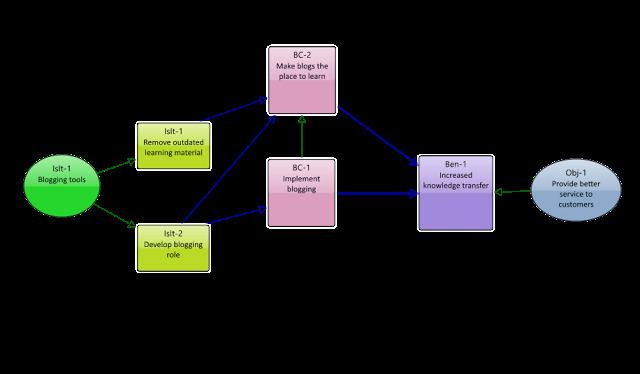 | ||
Benefits realisation management (BRM) (also benefits management, benefits realisation or project benefits management) is one of the many ways of managing how time and resources are invested into making desirable changes.
Contents
- Overview
- Mapping styles
- Benefits dependency networks BDN
- Benefits dependency map BDM
- Results chain
- References
Benefits realisation management has four main definitions. The first definition is to consider benefits management as an organisational change process. It is defined as "the process of organizing and managing, such that the potential benefits arising from the use of IT are actually realized". The second definition perceives it as a process. Benefits management is defined by the Association for Project Management (APM) as the identification, definition, planning, tracking and realisation of business benefits. The third definition is to apply this concept on project management level. Project benefits management is defined as "the initiating, planning, organising, executing, controlling, transitioning and supporting of change in the organisation and its consequences as incurred by project management mechanisms to realise predefined project benefits". Finally, the last definition perceives benefits realisation management as a set of processes structured to close the gap between strategy planning and execution by ensuring the implementation of the most valuable initiatives.
The popularity of BRM grew in the UK with the inclusion of BRM by the UK Government in their standardised approach to programmes, Managing Successful Programmes (MSP).
BRM practices aim to ensure the alignment between project outcomes and business strategies and has been shown to increase project success across different countries and industries. The Project Management Institute (PMI) identified that only one in five organisations report high maturity in benefits realisation.
"If value is to be created and sustained, benefits need to be actively managed through the whole investment lifecycle. From describing and selecting the investment, through programme scoping and design, delivery of the programme to create the capability and execution of the business changes required to utilise that capability, and the operation and eventual retirement of the resulting assets. Unfortunately, this is rarely the case."
Overview
As with all project management methodologies, BRM has clear roles and responsibilities, processes, principles and deliverables. The main roles are Business Change Managers (BCMs) who help the Benefits Owners (i.e. the main beneficiaries) identify, plan and review the expected benefits from the change and project managers who deliver the reliable capability on time and within budget. BRM is used to manage the investment by organizations in procurement, projects, programmes and portfolios. BRM is also used to ensure the organization maintains a benefits focus during continuing business operations.
Outcomes are changes identified as important by stakeholders and can be strategic or non-strategic. A benefit is a measurable positive impact of change. A dis-benefit is a measurable negative impact of change. Successful BRM requires accountable people, relevant measures and proactive management.
A generic BRM process is to:
To identify the investment outcomes, pictorial views of the outcomes of interest on an outcome map (also called a results chain, benefits dependency network or benefit map) can be created. This technique supports agreement of the outcomes sought as it shows the outcomes and relationships between them on a single page. They can be agreed upon and communicated clearly as a result.
Data can then be captured either separately or within a suitable modelling tool for each outcome that will include the benefit measures used for each, ownership and accountability information and information to support realisation management.
Mapping styles
Constructing benefits maps or graphs is usually done from right to left, with what is attempting to be achieved (often called objectives, strategic outcomes etc.) being the start point, then moving through intermediate outcomes to the things required to cause these to happen at the very left.
Benefits dependency networks (BDN)
The benefits dependency network has five types of object within maps.
Benefits dependency map (BDM)
The benefits dependency map also has five types of object on the maps
Results chain
The results chain has three types of object on the maps.
